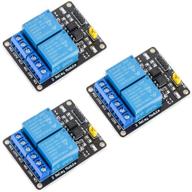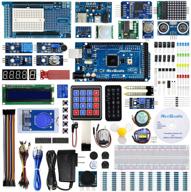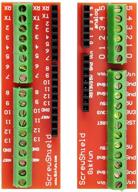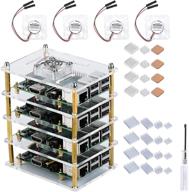
Review on 🐶 Freenove Robot Dog Kit: Raspberry Pi 4 B 3 B+ B A+ with Walking, Self Balancing, Ball Tracing, Face Recognition, Ultrasonic Ranging, Camera Servo – NOT Contained by Lori Allen

It won't replace your cat or dog - Power issues and buggy software
The idea that you could turn a Raspberry Pi into a walking robot kit was too big for me to pass up. I had some unused Pi boards lying around so this seemed like a fun project. First, I'm a systems engineer by trade. I deal with electronics, electrics, thermal engineering, mechanics and software on a daily basis. I would not recommend this kit to anyone unfamiliar with mechanics, electronics, computers, programming and the Linux operating system. Other than that, it was one of the most frustrating builds I've done in a long time. You will perform surgeries that require magnification, 4 hands and little fingers. First off, you'll need batteries - 18650 cells to be precise, and you won't find them on the shelves at your local grocery or hardware store. Luckily I had some USB rechargeable flashlights to borrow. About 30% of the documentation is devoted to setting up the Pi. Basically just make sure you set it up with a standard Raspberry Pi operating system, it connects to Wi-Fi, and you can use VNC or SSH to to connect to the Pi. You need to enable I2C, camera and a few other things and clone your python code from GitHub repo. The box contains an amazing amount of servos, screw/nut packages, circuit boards, cables and components. Plastic parts are stamped from plastic sheets that are cut on a CNC machine. They are glued to the sheets so that they do not fall out. Be careful here. It comes out easily if you push it straight but the material is quite brittle and I broke a few corners of the pieces when removing it but nothing that would interfere with the work. There are several spare parts which is a nice bonus. In general, the assembly turned out to be very interesting. Not the way I would design this kit. Very tedious, small and almost impossible operations. You need to randomly (yes, the instructions tell you to do it randomly) connect the servos, run the Pi program to index the servos, and then assemble the legs while the Pi is running and the power is connected. They have wires everywhere and it's a pretty crappy show. The instructions are vague in places, then there are a few sentences that are a bit confusing due to translation. Once you've assembled the kit and hooked up all the servos properly, it's a somewhat fun and satisfying test of all the components. After everything works you need to calibrate it. It comes with a sheet of paper and additional calibration feet that you attach to the robot. You align the calibration legs to their positions on the sheet, connect to the robot, and then adjust each leg to the desired position on the sheet using the X, Y, and Z settings in the calibration software. Once the calibration settings have been made, the robot is ready to use. He doesn't go very fast or very far. The battery life isn't that great. maybe 7-8 minutes from a full charge if you walk a lot. The client software on Windows is very unstable and crashes frequently. The robot will "tire" from time to time and won't let you walk for a while, unless of course while it's "resting" - mind you, that may be after you've walked just a few inches. It only runs well on smooth surfaces and easily snags on the edge of very low/thin carpet. The camera is fine and does the job, the audio range finder is a bit inaccurate when walking. Face ID, an impressive feature, is flawed like the rest of the software. I let him try to spot the person, but he was more interested in spotting the door behind the person. Maybe this can be used to get the robot to detect its location in the house by detecting objects? I planned to turn it into a smart roaming robot that could move around my house, take pictures, walk up and down stairs, and charge wirelessly. etc. Unfortunately, this robot as currently constructed is not capable of performing these tasks. It's a fun toy to attract cats and stare at them while clumsily moving inches for 7-8 minutes and constantly restarting the client app after crashing. Then return to the charger for a few hours before the next session. I'm using a Raspberry Pi 4, which has the highest power consumption of any Pi device. I tried using Pi Zero W which should work. However, the camera's ribbon cable was found to be incompatible with the one that came with it. I'm curious if using the Pi at lower power will increase battery life. Took me about 8 hours to assemble this kit and I think for the price it was worth it. It was annoying at times, but it looks really cool when toggled on and off, and it's oddly nice to use VNC or SSH on the "robot".
- Complete kit
- Not sure
New products
Comments (0)
Top products in 🖥️. Single Board Computers

🌐 MCIGICM 2 Channel DC 5V Relay Module: Optocoupler Low Level Trigger Expansion Board for Arduino UNO R3, DSP, ARM, PIC, AVR, STM32, Raspberry Pi

11 Review

REXQualis Comprehensive Starter Kit with Arduino MEGA 2560 & Detailed Tutorial for Arduino IDE Compatibility

11 Review

Gikfun Screw Shield Expansion Board: Enhance Arduino UNO R3 with the EK7007 Add-On

11 Review

GeeekPi Raspberry Pi Cluster Case with Cooling Fan and Heatsink for Pi 4 Model B, 3 Model B+ & 3/2 Model B

11 Review
Another interesting products

36-Pack Black Rubber PC CPU/Case Fan Screws/Rivets Set for Computer

11 Review

🖥️ Helifouner 450-Piece Computer Standoffs Spacer Screws Kit: Ideal for Hard Drive, Motherboard, Fan, Power Graphics & Computer Cases

10 Review

Glarks 660 Pieces Phillips Assortment Motherboard

10 Review

🔧 Premium Repair Replacement Screws & Tools for MacBook Pro Retina 15"/13" - Complete Bottom Case Set

10 Review

